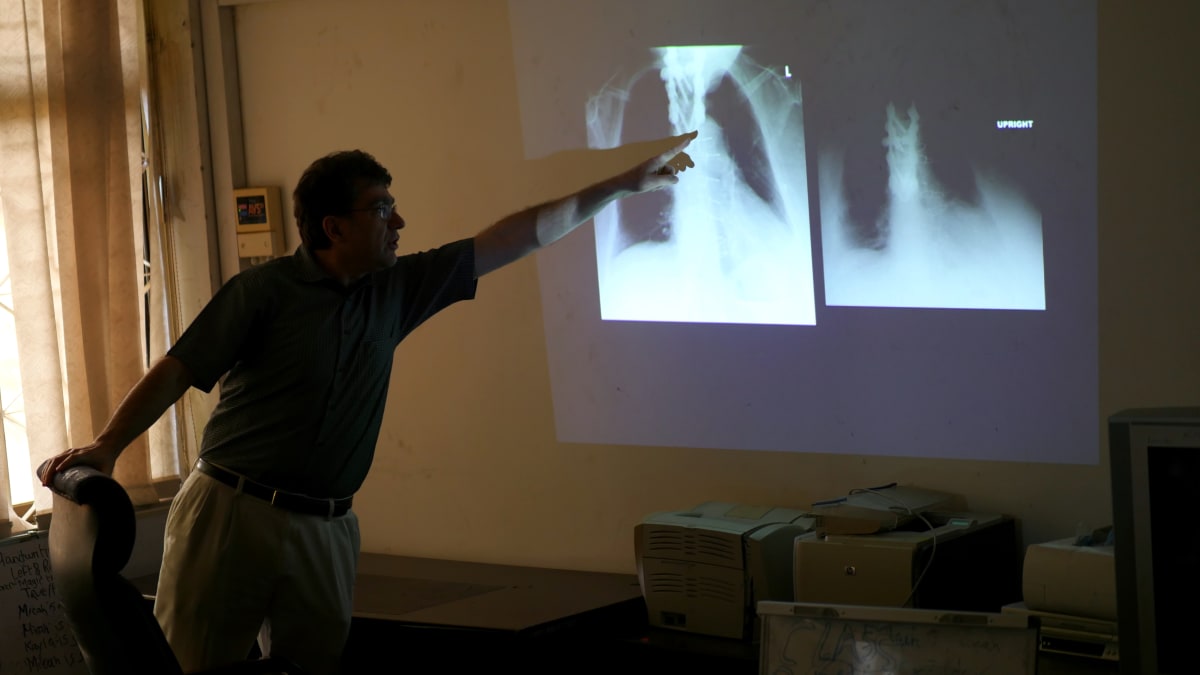We plan to establish the first ever Interventional Radiology (IR) training program in Tanzania, where there is currently no formally trained Interventional Radiologist for a country of 60 Million people.
https://youtu.be/9gMQkV22p4E
Our training program will provide a direct clinical service to the 50-100 Tanzanian patients treated during our 2 week trip, while at the same time provide hands-on training for the first generation of Tanzanian Interventional Radiologists.
The model of providing in-country longitudinal specialized training in Radiology is unique, and could be scaled to other LMIC countries. We plan to publish and disseminate widely our lessons learned.
We plan to send 10 US-based IR faculty each year, for 20 weeks of in-country training; for 3 consecutive years. We hope this will establish a core Interventional Radiology faculty in Tanzania, who will train the second cohort of Interventional Radiologists in Tanzania.














I am incredibly grateful for travel grant support from the Dox Foundation, which covered the full cost of my round-trip airfare from New York, USA to Dar es Salaam, Tanzania, East Africa. Like most
awesome things in life, the Foundation support was entirely serendipitous and coincidental to our own grassroots fundraising effort for the Tanzania Interventional Radiology Initiative! We were asking for $2,000 USD per US Interventional Radiology (IR) Faculty to cover airfare and housing costs for two weeks; to help us train the first generation of Interventional Radiologists in Tanzania. The support from the Dox Foundation allowed us in turn to support airfare costs for two IR nurses and one IR technologist, who were instrumental in helping us implement training of a multi-disciplinary IR team, from the very beginning. In short, support from Doximity has allowed us to pay it forward at least three-fold!
It takes a village to raise a child
We had a very successful launch of the Tanzania Interventional Radiology Initiative, which seeks to both train IR specialists and provide IR services within Tanzania for the very first time! Over three weeks (October 21st to November 9th, 2018) we rotated two full IR teams at the Muhimbili National Hospital (MNH) in Dar es Salaam, Tanzania; consisting of an IR physician, IR nurse and IR technologist. During this short period, we successfully performed 38 IR procedures at MNH without any major complications. IR procedures included percutaneous biliary drainage, percutaneous nephrostomy, percutaneous abscess drainage and core needle biopsies. We started the formal training of 7 Muhimbili University of Health
and Allied Sciences (MUHAS) radiology residents (3 senior and 4 junior residents), who are slowly being transformed into IR fellows! We also had several visiting Radiologists from other hospitals in Dar es Salaam, and from far away as Dodoma, who were keen to observe and learn about the IR procedures. As mentioned earlier, the training of Tanzanian IR nurses and IR technologists occurred simultaneously. Our most memorable patient was jaundiced and suffered from severe itching from accumulated bile, whose natural drainage was blocked by a surgically inoperable tumor. The next morning, following successful percutaneous biliary drainage (a first in the country!), our patient remarked gratefully that this was the first time he had been able to sleep in weeks without itching!
See one, Do One, Teach One
Adults (and perhaps children) learn best by and from role-modeling. We observe carefully what others do, then try to imitate them (See one, Do one). Once we master a skill, we have an opportunity to
replicate the learning process for others (Teach One). We intuitively understand this process for procedures and manual tasks, of which IR much like surgery is a prime example. However, teaching and
learning image-interpretation skills (diagnostic radiology) is no different! Our team included 9 Diagnostic Radiology Faculty and Residents from Yale, Dartmouth, Stanford and the West Haven VA Hospital, CT; who gave didactic lectures and workstation teaching sessions for two weeks, and also led an ultrasoundguided breast biopsy simulation session for MUHAS radiology residents. Dr. Timothy Rooney from Dartmouth, who also received generous travel support from the Dox Foundation, was instrumental in co-leading the Diagnostic Radiology teaching sessions for our trip.
There is no shortage of didactic radiology materials available online and offline; so why travel all the distance to Tanzania just to teach radiology, one might ask? The most valuable teaching moments
actually happened during the workstation teaching sessions – where MUHAS residents would both observe and practice image interpretation skills and reporting clinical cases while being mentored by our team of Faculty and Residents. Our Faculty and Residents often remarked how exciting and demanding it was to teach radiology in a different environment where many US-centric assumptions about trainees and local disease patterns were constantly challenged. Many of us come to Tanzania as teachers, and leave as renewed learners.
Did you notice that all three leaders on the podium in the photograph above are women? This is the present; but the future of Radiology in Tanzania is even more exciting, because 75% (24 of 32) of current
MUHAS radiology residents are also women! The implications of this exciting trend cannot be overstated, in terms of building the capacity to provide much needed radiology services for women and children in Tanzania. We are grateful for the opportunity to support radiology resident training, and be part of securing the future of Radiology in Tanzania. We applaud and once again thank the Dox Foundation for making this experience possible and for this amazing platform to share our experience!